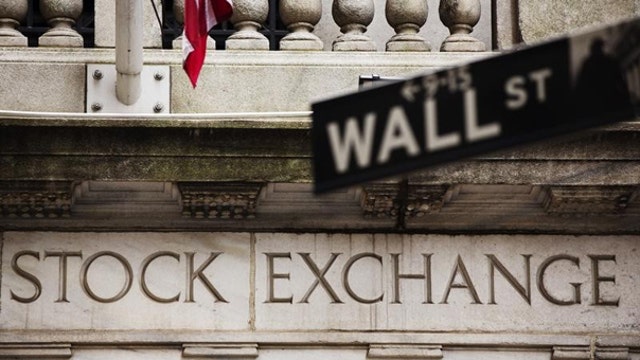Dodd-Frank at 5: 'Too Big to Fail' Banks Still Too Big
Five years after Congress passed the sprawling Dodd-Frank banking reform bill all of the ‘too big to fail’ banks that prompted the legislation in the first place are still too big to fail. Some are even bigger.
In the summer of 2010 when Dodd-Frank was passed, J.P. Morgan Chase (NYSE:JPM) held $2.1 trillion in assets. Five years later those assets have grown to $2.4 trillion. Wells Fargo (NYSE:WFC), following its 2008 shotgun wedding to Wachovia, held $1.2 trillion in assets when Dodd-Frank was passed. That figure now stands at $1.7 trillion.
Citigroup (NYSE:C) and Bank of America (NYSE:BAC) have both downsized a bit since the summer of 2010, but both remain firmly entrenched in the top five U.S. banks by assets. In other words, too big to fail.
Meanwhile, those top five banks control a larger percentage – more than 44% in late 2014 -- of all U.S. banking assets than ever before, up from 9.7% in 1990, according to research by SNL Financial.
So the question now isn’t whether Dodd-Frank has somehow shrunk the largest banks such that their global impact should they fail for whatever reason is more in line with the hundreds of other mid-sized and small commercial banks doing business across America. It hasn’t.
Reins in Place
The question is whether new regulations included in Dodd-Frank are effectively targeting the risky conduct practiced by all of the biggest banks in the run up to the 2008 financial crisis.
They are, says Ted Peters, chief executive of Bluestone Financial Institutions Fund, a hedge fund that invests in small and mid-sized publicly traded banks.
“It’s true that the biggest U.S. banks control more assets now than they did in 2008, but there are now reins placed on them through new regulations imposed by Dodd-Frank,” said Peters, a former member of the Federal Reserve Bank of Philadelphia.
Peters pointed to Dodd-Frank reforms that target four risky banking practices widely cited in the wake of the 2008 crisis as significant contributors to the worst economic downturn since the Great Depression.
The biggest U.S. banks are now required to put aside far more capital than was required a decade ago to protect against losses. On Monday, for instance, the Federal Reserve approved new regulations for capital buffers that go well beyond similar capital mandates required under international guidelines. The latest ‘surcharge,’ as the Fed refers to the new rule, is clearly designed as an incentive for ‘too big to fail’ U.S. banks to downsize their operations and to avoid excessively risky conduct.
“A key purpose of the capital surcharge is to require the firms themselves to bear the costs that their failure would impose on others,” Fed Chair Janet Yellen said in a statement. “They must either hold substantially more capital, reducing the likelihood that they will fail, or else they must shrink their systemic footprint, reducing the harm that their failure would do to our financial system.”
Dodd-Frank also requires more transparency from banks in terms of their investments in complex derivatives such as credit default swaps, the products that led to the government’s controversial $85 billion bailout of insurer AIG.
Lack of transparency in derivatives markets was blamed for allowing banks and other financial firms to make all manner of risky bets on the overheated U.S. housing market. When the housing market collapsed and those bets went sour, the domino-effect rippled through these opaque derivatives markets with devastating impact on the banks and financial firms that risked the most.
Heads I Win, Tails You Lose
Regulators now have a clearer idea who’s betting how much on what via the reforms requiring more transparency in derivatives markets. “I think the derivatives reforms have been especially important,” said Peters.
The biggest banks have also been required to prepare so-called ‘living wills’, or codified plans for winding down their operations in the event of some crippling event. Lack of such a plan contributed to the financial chaos that followed the swift demise of Lehman Brothers in September 2008.
Finally, the adoption of the Volcker Rule which bans banks whose deposits are insured by the government from using those deposits to trade for their own profits.
Banks that used depositors’ money to trade for their own profits benefited in good times and then got bailed out by the government in bad times. The Volcker Rule, named for former Federal Reserve Chairman Paul Volcker, prevents that from happening again.
“Why should these banks be using depositors’ and shareholders’ money to run hedge funds?” said Peters. “It was a heads I win, tails you lose situation.”
One widely-acknowledged unintended consequence of the increased regulation brought about by Dodd-Frank, however, has been the increased burden on small, community banks, many of which are struggling to keep up with the costs of compliance with the reforms.
Forcing the smaller banks to comply with the same regulations and to operate under the same scrutiny as the handful of big banks whose failings contributed significantly to the financial crisis is “overkill,” said Peters.
“They’re being punished for the sins of the larger banks,” he added.




















